Number plates aren’t just for show – they’re a legal requirement. Without one, your vehicle isn’t roadworthy, and that could mean fines or an MOT failure.
In the UK, interest in custom number plates has grown. Whether it’s a 3D finish or a quirky combo, the process behind it is surprisingly technical.
So, how are number plates made? This article breaks down the materials used, the manufacturing steps, what the law says, and how different countries approach plate production. It also covers the environmental impact and why choosing a registered supplier matters.
Materials Used in Number Plate Manufacturing
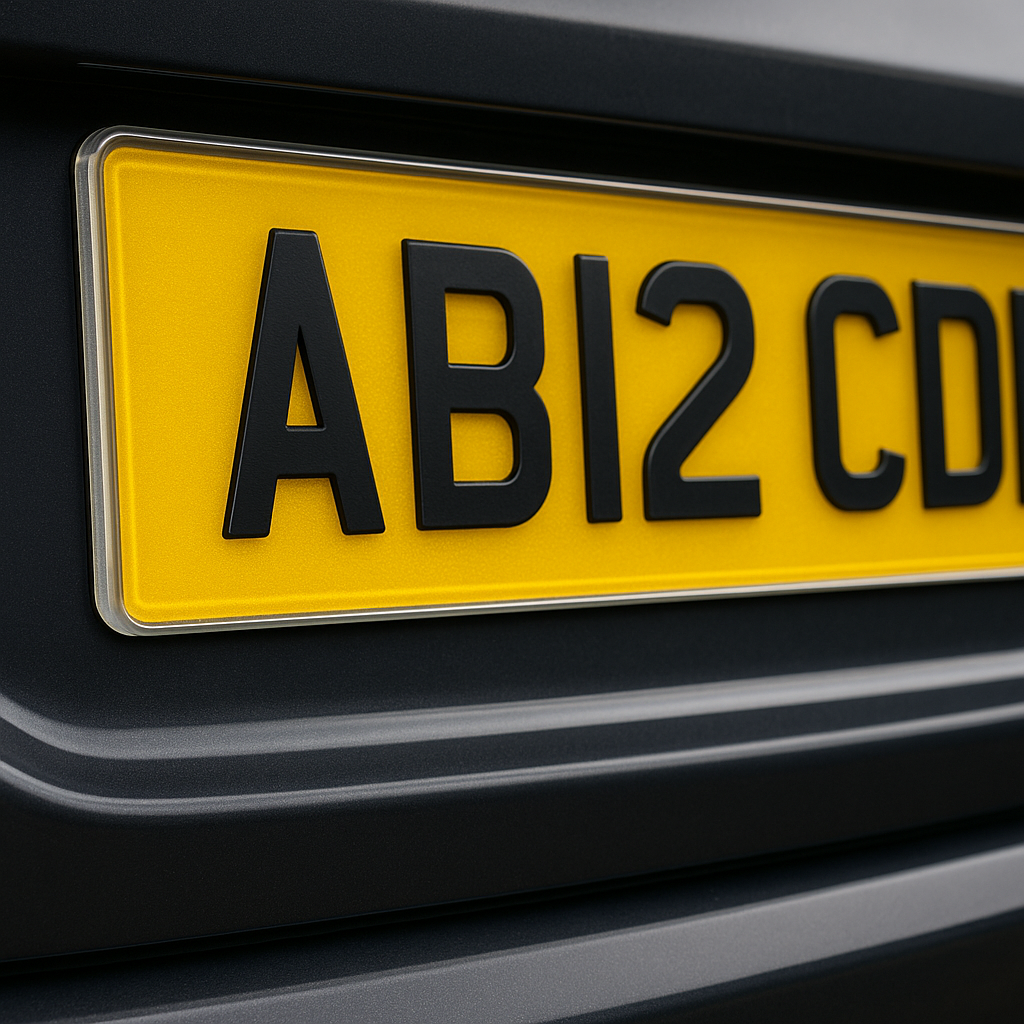
To build a number plate that holds up on British roads, it takes more than just plastic and a printer. Here’s what usually goes into making one:
- Acrylic sheet – this forms the clear, rigid face of the plate.
- Reflective film – this sits behind the text, helping visibility during the day and night.
- Adhesive layers – these bond the components tightly using pressure and heat.
In some countries like Germany, aluminium is used instead. Metal plates tend to be tough and longer-lasting, but they’re heavier and more expensive to produce – not ideal for every vehicle.
Every plate made in the UK has to meet ANPR readability standards, so reflective materials aren’t optional. The materials also need to resist rain, sun, frost, and grit – they’re tested for strength and fade-resistance before they’re ever fitted to a vehicle.
The Production Process of a Number Plate
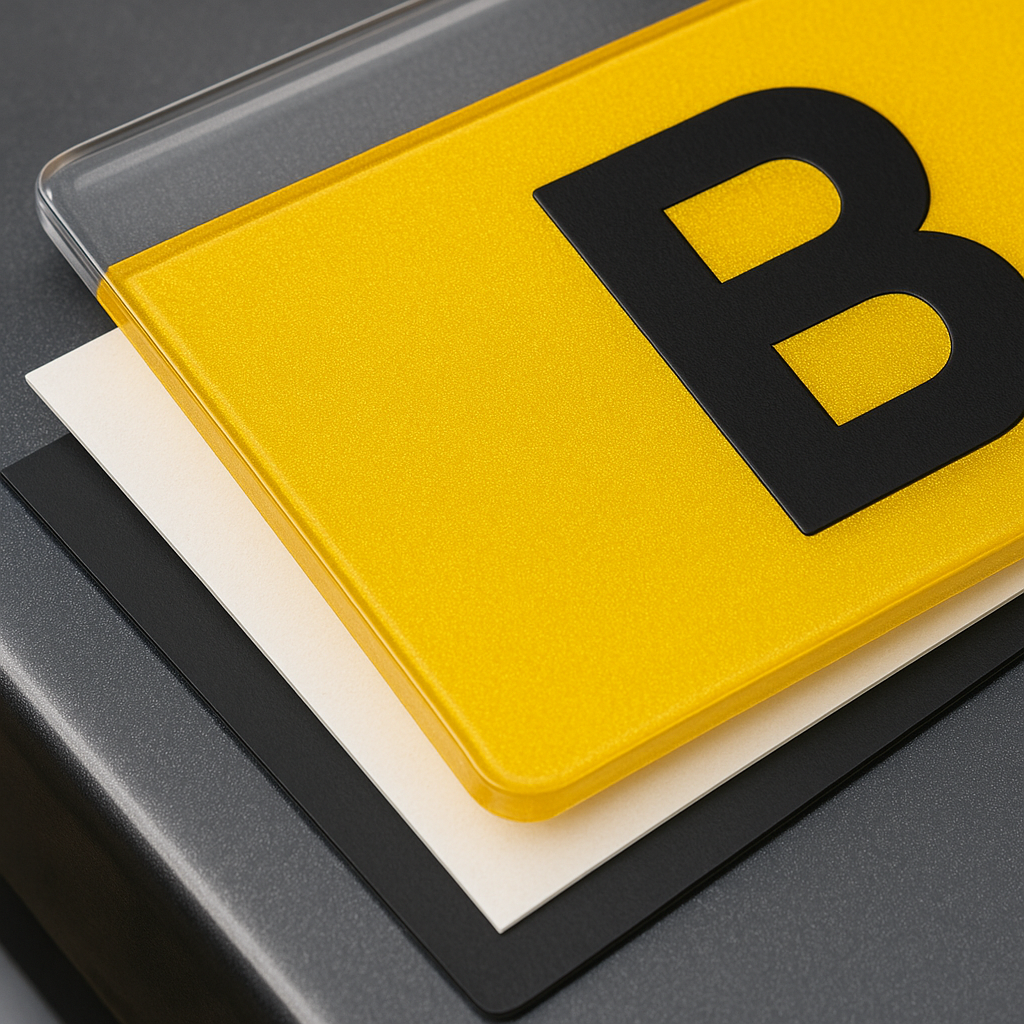
Once the materials are ready, it’s a fairly precise operation. Here’s how a number plate goes from raw sheet to legal display:
- Printing the registration – the chosen registration number is printed onto the reflective layer using either thermal transfer or laser technology. This print must match strict DVLA guidelines for size and layout.
- Bonding the layers – the printed reflective sheet is pressed onto the back of the acrylic face using adhesive and heat, locking it in place permanently.
- Shaping the plate – the bonded plate is cut to size using a cutting machine, following DVLA rules on width, height, and character spacing.
- Final checks – every plate is inspected for clarity, reflectivity, and layout. If anything’s off – even slightly – it won’t pass.
It’s a quick process, but every stage plays a part in making a plate road-ready.
Legal Standards and Regulations for Number Plates
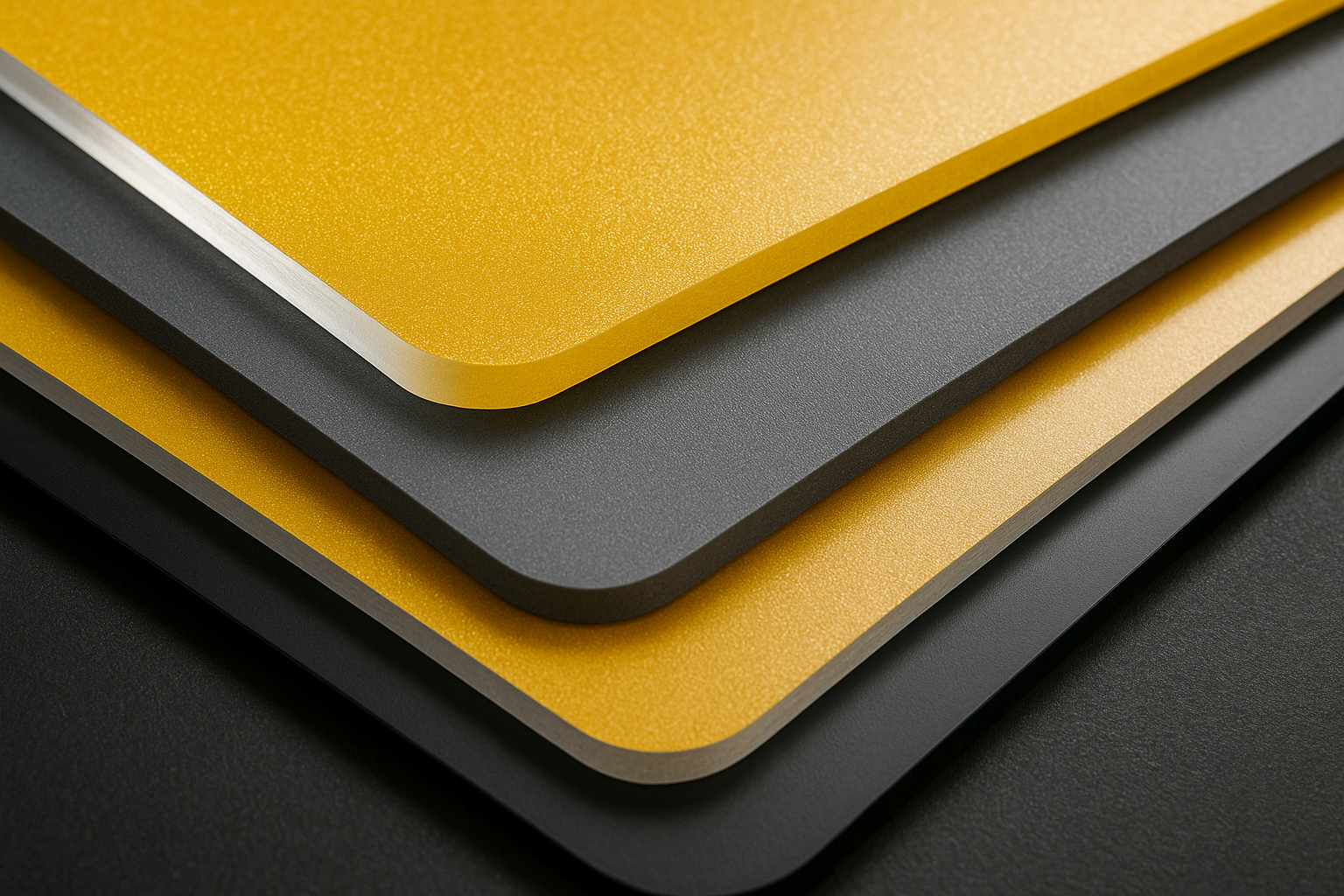
In the UK, number plates have to follow a set of rules laid out by the DVLA, and they’re not exactly up for debate. Every plate must use the Charles Wright font – no tweaks, no flourishes. The characters need to be a set height, with exact spacing and margins. Even a slight misalignment could flag up an MOT issue or land you with a fine.
To legally buy a number plate, you’ll need to go through a registered supplier. They’ll ask for proof of ID and your vehicle documents – usually the V5C logbook. Once made, the plate must display:
- The supplier’s postcode
- The British Standard code: BS AU 145e
That code shows the plate meets current durability and readability rules. Skip these details and you risk fitting something that’s not road-legal – and that can lead to penalties or points.
How Custom and Personalised Plates Are Made
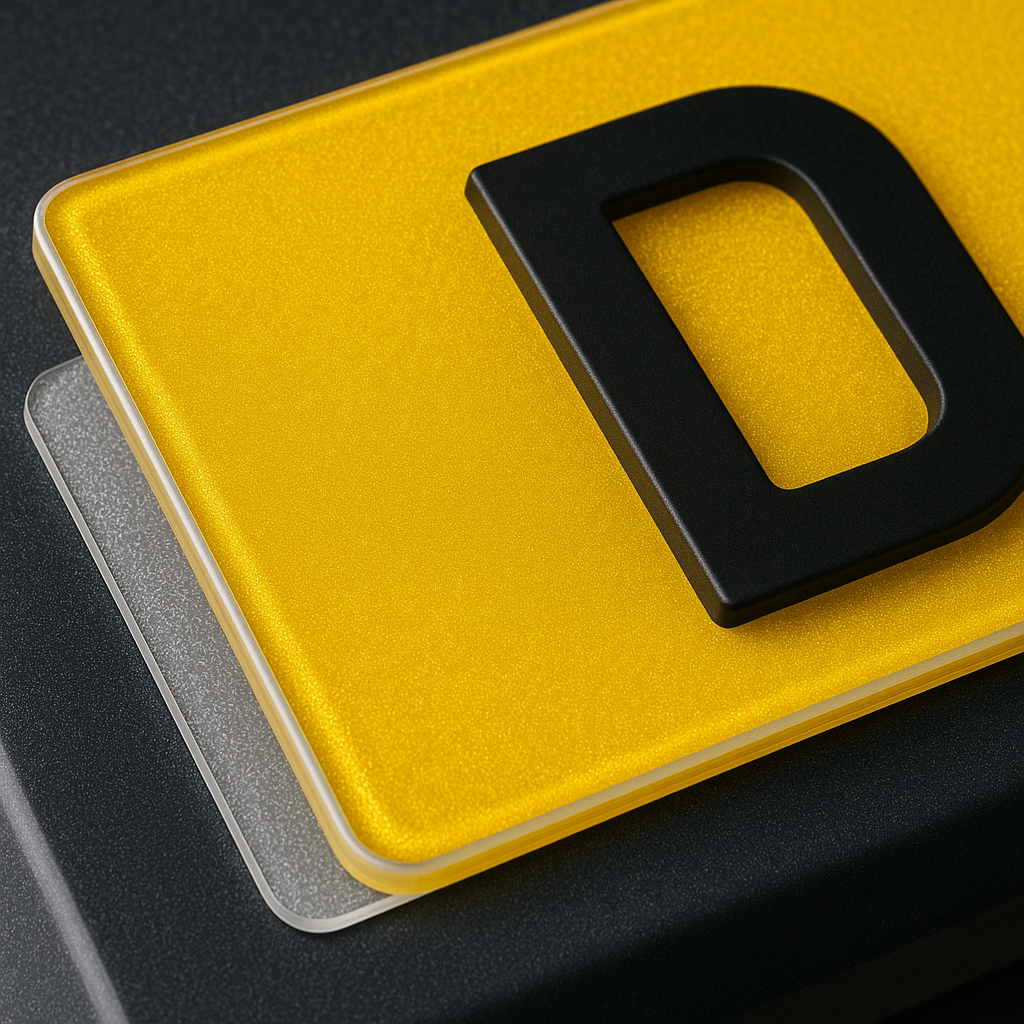
Personalised plates follow the same production process as standard ones – but with a few extra touches, depending on what the buyer wants (and what’s allowed).
First off, the registration itself is different. Instead of being randomly assigned, it’s chosen – either bought directly from the DVLA at auction, or through a private seller. Once secured, the rest is about visual tweaks.
Things like 3D gel characters, 4D laser-cut lettering, coloured borders, or even regional badges can be added. But every tweak has to sit inside legal boundaries: no creative spacing, no hidden messages, no unapproved fonts. Even slogans are restricted.
So while you can personalise the style, the rules around spacing, layout, and legibility still apply. A plate can look bold and still be legal – it just takes the right balance between flair and compliance.
Differences in Number Plate Manufacturing Around the World
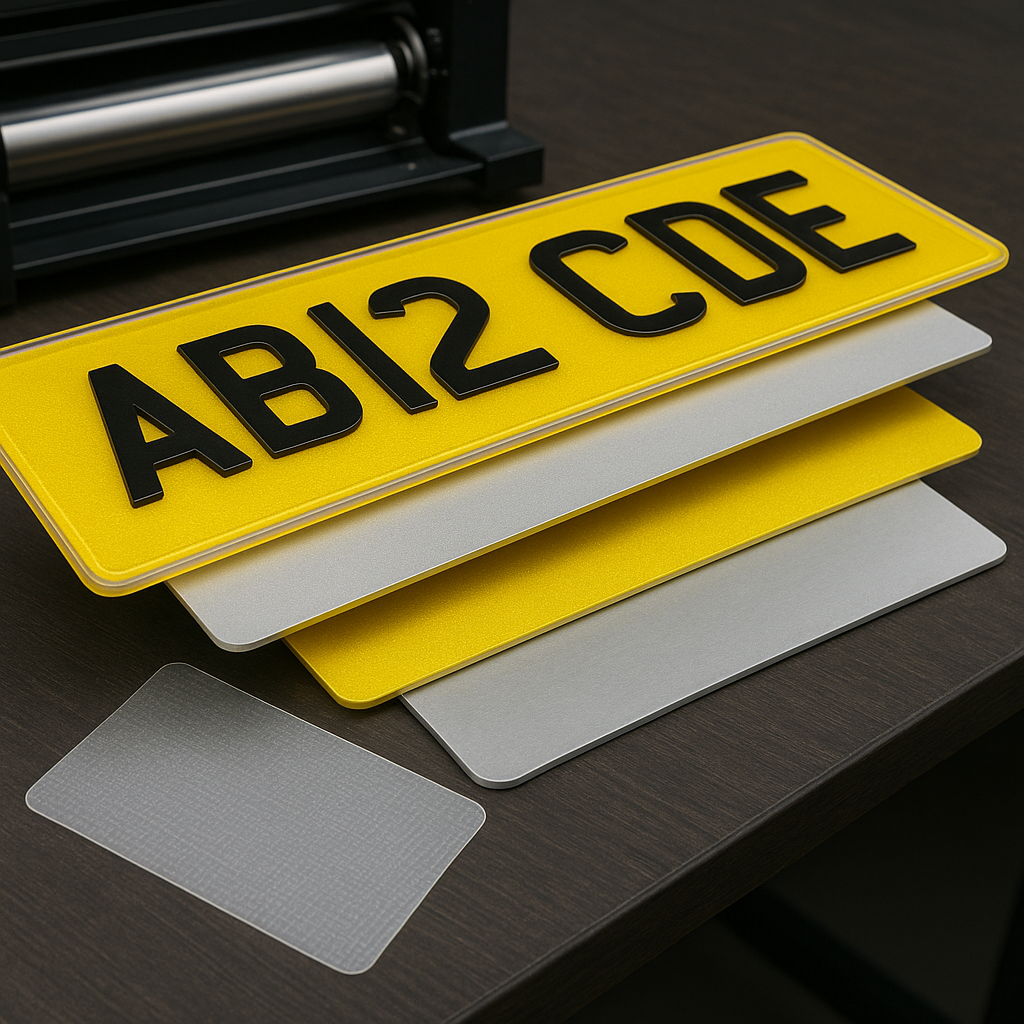
Not all countries make plates the same way:
- Germany uses pressed metal with embossed letters.
- In the US, every state designs its own plates – fonts, materials, and layouts vary.
- Japan, France, and others add stickers, holograms, or regional markers.
Some regions use security tech like barcodes or RFID chips to stop fraud. In the UK, the focus is mainly on readability for ANPR systems.
Environmental Impact and Sustainable Plate Production
Most UK number plates are made from acrylic, which isn’t biodegradable. Some suppliers are exploring recycled or lower-impact materials, but these alternatives must still meet DVLA standards. It’s a tough balance – plates need to withstand harsh weather and road use. While greener options are emerging, they’re not yet widely adopted, as durability and compliance remain top priorities in plate manufacturing.
Where to Get a Legal Number Plate Made
If you’re buying a number plate, it needs to be done properly – and that means following the rules, not cutting corners. We get a lot of people coming to us after being caught out by sellers who didn’t do the checks or didn’t add the legal markings. That’s not how we do things.
At Demon Plates, we’re a DVLA-registered supplier, which means we’re approved to make number plates that meet all the legal requirements, from the font and spacing right through to the British Standard markings.
To get a plate made with us, you’ll need:
- Your V5C logbook or retention document
- A valid form of photo ID, like your driving licence
That’s it. Once we’ve verified those, we’ll get to work. Whether you're ordering online or need something specific for an import, a bike, or a short private reg – we make sure it’s sized correctly, laid out properly, and sent to you without any guesswork.
We don’t skip checks. We don’t ignore the rules. And we don’t send out anything we wouldn’t fit on our own vehicles. That way, you can be sure your plate won’t cause issues at MOT, get flagged on the road, or land you with a fine.
So, how are number plates made? It’s not just about printing letters on plastic – it’s a process shaped by law, materials science, and a surprising amount of detail.
Whether you’re replacing a damaged plate or picking something more personal, the legal route is the only one worth taking. Registered suppliers make sure your plate is road-ready, built to last, and meets every DVLA rule in the book.
If you’re thinking about a custom plate, it’s worth checking DVLA guidance and getting it made through someone who knows the rules inside out. A proper plate doesn’t just look the part – it’ll keep you on the right side of the law too.
